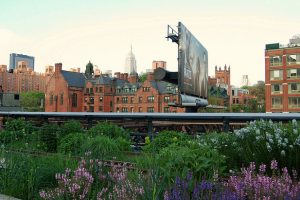Credit: JR P (CC BY-NC 2.0)
For years, ecologists measured differences in land use type and cover as black or white, natural or unnatural. This paradigm, known as ecology in cities, supports a very narrow view of sustainability. It focuses on the persistence and viability of “natural” patches, which addresses only a single pillar of sustainability, the environment, and fails to acknowledge the coexistence of natural and built environments, such as street trees lining a paved city sidewalk.
The ecology of cities paradigm, however, recognizes such gray areas where vegetation, permeable pavement, and impermeable pavement persist together. Ecology of cities allows for a more inclusive view of sustainability that recognizes societal and economic needs as well as environmental. For example, the ecology of cities paradigm recognizes the value of shade from street trees and tree’s interaction with the water cycle. These elements of sustainability go overlooked under the ecology in cities paradigm, which highlights that sustainability measurement has big implications for implementation.











